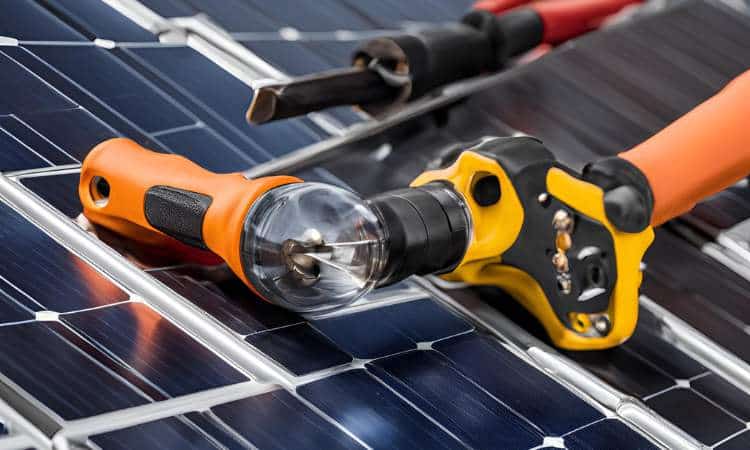If DIY-ing solar installation has crossed your mind, you might be trying to cover all the bases to ensure a successful project. DIY-ing isn’t really an ideal option because of the many challenges that truly outweigh its pros. Most people who install their solar panels by themselves have one objective: to save more money. Unbeknownst to these people (and many), it’s more costly to install your solar panels. Why?
It requires specific knowledge

Your solar panels don’t come with an easy-to-follow manual. What it comes with is a manual that is designed for professional solar installers. It’s not your average weekend home improvement project—it’s more technical than that. One wrong move could lead to significant issues that would add to the costs and could even put you at risk.
This is because installing solar panels requires planning and a lot of organisation. Therefore, if you choose to take the DIY route, be prepared to invest a lot of time in it. There are a lot of things that go into solar installation from design and installation to permitting and final grid connection.
Energy Matters is a trusted solar quote provider. We can connect you to the best local solar installers in your area.
It needs a team
It also requires a team of people to get done. Lifting the panels is not a one-person job, and installing them onto the roof requires several sets of hands. You can gather your friends, family members, or neighbours to help you out, but the challenge is: do they have the right knowledge to get things done? If ever you come up with your own team, everybody needs to learn the ins and outs of solar installation before the work takes place.
It requires specialised equipment

There are a lot of things you need to install a solar system. This includes a mounting system, power or DC optimisers, a charge controller, and more. All of this equipment will cost you more money and you will not buy in bulk.
The cost of the equipment is one thing, and the quality is another. If you don’t have enough experience to know the difference, it’s easy to fall for low-grade items and cheap solar cells. If you do end up using low-quality solar equipment, you may need to deal with a shorter lifespan, reduced power efficiency, or a more complicated installation.

It Forfeits Your Eligibility for Government Incentives
One of the biggest challenges in going the DIY route is that you will miss out on significant government incentives. Programs like the Small-scale Technology Certificates (STCs) are only for installations by accredited installers.
Many states and territories provide their own rebates and incentives, which are usually contingent upon installation by qualified professionals.
It needs a lot of time
With so much that goes into solar installation, it could take you months when you’re doing it by yourself. There are so many things to consider as well, especially the permitting requirements in your area. This also entails various government and utility companies to get approvals and permits for your project—and it’s not easy work. In fact, it can be stressful.
Professional solar installers have a dedicated team who handle all the permitting work and have established relationships with people who review and approve the permits.
It comes with safety risks
Installing rooftop solar panels means climbing onto and working on the roof. Hence, you need to understand and follow safety protocols to avoid hazards like falling off the roof.
It involves advanced electrical work

A solar project is a major project that involves powering your entire property. From installing the solar panels, you also need to install other components, such as the inverters, meters, electrical panel connections, batteries, and more.
With all of these installations and components, there needs to be solid knowledge and skills on the electrical side of things. Even if tutorials are accessible online, the many technical components and wiring can be confusing. In this case, there is no room for mistake—loose connections, crossed wires, and exposure to elements can lead to electrocution or fire.
It could void the warranty
Warranty is one of the most important things in a solar system. However, when something doesn’t go right in your solar installer, your manufacturer could void the warranty. You might find yourself struggling to file a claim. This is why you need to ensure that your installation will be done based on the manufacturer’s requirements and is connected to the utility grid properly. In case the issue is not covered by warranty, be prepared to pay for the repairs, which could potentially cost a lot of money.
It limits your options
When you’re DIY-ing solar installation, you must have a good understanding of your energy needs. If you need to power a lot of devices, a simple electrical system from a DIY solar kit won’t cut it. This is why a professional solar installer is necessary as they can design the right solar system size suitable for your needs.
Doing it by yourself will also limit your financing options. You will likely need to buy the system outright when you choose to install the solar system by yourself.
These are the common challenges you’ll likely encounter when you DIY the installation of your solar system, Even though some people don’t, it’s really not a feasible option especially if you have a full-time job or you simply don’t have the knowledge and skills for it. It’s best to leave the heavy lifting to professionals, especially for those with larger homes with significant electricity needs.

















